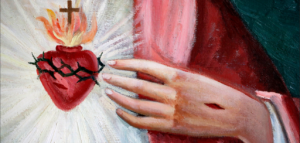
NATIVITY OF THE BLESSED VIRGIN MARY
The celebration of the Birth of Mary seems to be eminently logical, as it is nine months after December 8, the commemoration of the day Mary was conceived by Saints Anne and Joachim. There is one slight problem, since the feast of Mary’s birth was celebrated for many years before there was a feast of her conception. And since neither of the dates for these events are recorded in the Bible, where does the picking of a date for either feast come from anyways? Add to that the custom of the Church, that since birth dates are often shrouded in history, Mary, Jesus and John the Baptist are among the small group who have liturgical feasts for both the beginning and end of their earthly life. Normally, when we celebrate the dies natalis or the birthday of a saint, what we are celebrating is the day they died, the day they were born into heaven.
Well, it turns out that this feast day, like many others, is in large part about the dedication of a church building. The church of Saint Anne in Jerusalem was dedicated on this day in the sixth century as a church dedicated to Mary: Basilica Sanctae Mariae ubi nata est – the basilica where Holy Mary was born. According to this tradition, Mary was a Jerusalem girl. The church building was given to France in the 19th century by an Ottoman emperor, and French Presidents still make claims that it forms part of the territory of France. This feast joins several other dedication feasts in the Roman Missal, including the dedication of the four major Roman basilicas of Saint Mary Major (August 5), Saints Peter and Paul (November 18), and the Lateran Basilica (November 9).
For me, feasts of church building dedications and feasts of historical commemoration like the Birth of Mary have an interesting connection. Both should have an impact on our lives. As for historic feasts, especially in times when things seem to be especially challenging, it is important to remember that the origins of our faith are rooted in flesh and blood history. The events of our salvation were carried out by real people. When we make memory of those people and events, we are not telling bedtime stories, we are making memory of our ancestors in faith, ancestors who are still a part of who we are today.
Feasts of dedication are likewise a way to make memory of all those who planted faith, whether in Rome or Jerusalem or in Canada. Sometimes overcoming incredible odds, a church was built by people who, though long dead, still stand ready to support us in our journey of faith.
To have both of these support systems – those who lived out the events of our salvation and those who ensured that the memory of those events would not fade – is truly something we should celebrate because these saints are our supports to strengthen us in sad times and to make the good times even more meaningful. That is why the anniversary of the dedication of your parish church is considered one of the most important days of the liturgical year. People’s memories and church records are imperfect, so in Canada we have a day in the liturgical calendar to celebrate the dedication of your church, if that date has been forgotten. So if your community doesn’t know the dedication date of your Church, it is automatically October 22. If your parish church was never consecrated, and only blessed, you might want to look into that too!
So celebrate the Birth of Mary by recalling that Mary is one of us, as are Jesus and all the saints, and by giving thanks for the church in your diocese, and in your parish. Make a pilgrimage and celebrate! God is with us.

–Glenn Byer, has been making music for the Mass for 40 years, and has been writing about and offering courses and workshops on liturgy for more than 30 years. He holds a Master’s in liturgy from the University of Notre Dame, and a doctorate in liturgy from the Pontifical Institute for Liturgy at the Atheneaum of Sant’Anselmo in Rome. Glenn has written numerous books, some of which include 26 Ordinary Ways to Live the Liturgy, Unlocking the Feasts and Seasons of the Liturgical Year and Living the Liturgy of the Word.

